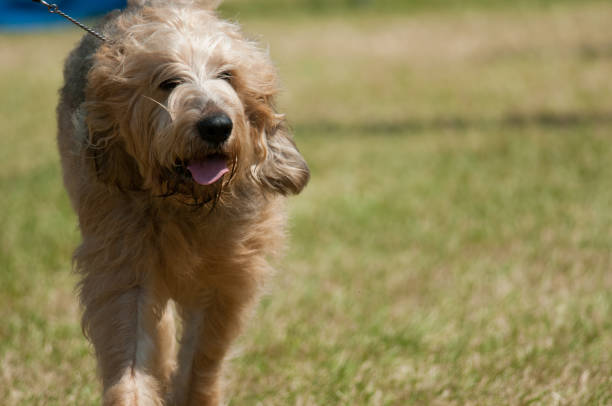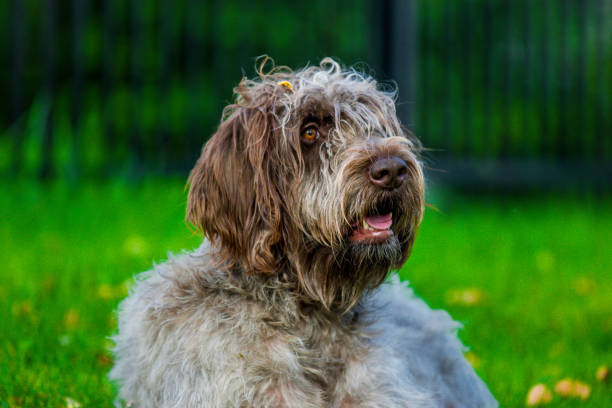Otterhound

Breed History:
The Otterhound is a rare and ancient British breed developed specifically for hunting otters in medieval England. With records dating back to the 12th century, it was traditionally used by the nobility for tracking and eliminating otters, which were once considered a threat to fish populations in rivers. The breed was developed from a mix of scent hounds, including the Bloodhound and various French griffons, giving it an exceptional nose and stamina in water.
Following the decline of otter hunting—banned in the UK in the 1970s—the breed’s purpose waned, and it became increasingly rare. Despite its historical significance and unique characteristics, the Otterhound remains one of the most endangered native breeds in the United Kingdom today. Still, it is cherished by enthusiasts for its good-natured personality and impressive scenting abilities.
|
Gender |
Height |
Weight |
|
Male |
69 cm |
41–52 kg |
|
Female |
61 cm |
34–45 kg |
Size – Large
Life Expectancy: 10–13 years

Breed Appearance:
The Otterhound has a distinctive, shaggy appearance with a rough, double coat that protects it in wet environments. Its waterproof coat is dense and oily, often wavy, and comes in a variety of colours, including wheaten, black and tan, grizzle, and liver. A hallmark of the breed is its large, webbed feet, which provide excellent propulsion in water.
Its broad, noble head features a large nose and long, drooping ears covered in hair. The eyes are deep-set and expressive, often conveying a gentle, inquisitive nature. The body is muscular and slightly rectangular, built for endurance rather than speed, and the overall appearance is one of rugged capability and charm.
Breed Type – Family/Hunting:
Originally bred for water hunting, the Otterhound retains its working drive, but today it is more commonly a loyal family companion. It is known for its friendly, cheerful personality and is typically good with children and other dogs. Despite its hunting background, it’s not aggressive and enjoys being part of a household.
This breed does best in active homes that can accommodate its exercise needs and give it time and attention. While affectionate and social, the Otterhound is independent and can be stubborn, often following its nose rather than commands. Its loud, musical bay and strong scenting instincts are reminders of its tracking heritage.

Training:
The Otterhound is intelligent but independent, which can make training a challenge for first-time dog owners. It tends to have a mind of its own and may be easily distracted by interesting scents. Consistency, patience, and positive reinforcement are key to successful training with this breed.
Early socialisation is essential to ensure a well-rounded dog. Training should be engaging and interactive, using treats and praise to hold attention. Harsh discipline is ineffective and can lead to resistance. Due to its size and energy, obedience training should begin early to instil good manners and leash habits.
Health & Care:
The Otterhound is generally a healthy breed with a sturdy constitution, but due to its small gene pool, it is susceptible to some inherited conditions. These include hip and elbow dysplasia, bloat (gastric torsion), and epilepsy. Regular vet check-ups and responsible breeding practices help mitigate these risks.
Its dense, oily coat needs regular maintenance to prevent matting and skin issues, especially around the ears and underbelly. The breed’s love for water also makes regular ear cleaning essential to prevent infections. Proper nutrition, weight management, and moderate exercise support its long-term health and mobility.

Living Conditions:
The Otterhound is best suited to homes with plenty of space and access to the outdoors. Its large size, vocal nature, and exercise needs make it ill-suited for apartment living. It thrives in rural or suburban environments where it can roam, sniff, and explore safely.
The breed enjoys being part of a family and does not like to be left alone for long periods. Secure fencing is important, as its strong scenting instincts can lead it to wander. While calm indoors, it benefits from having a yard or nearby park to burn off energy and satisfy its natural curiosity.
Exercise:
An active breed, the Otterhound requires regular, vigorous exercise to maintain its health and happiness. Daily walks, hikes, and opportunities to swim are ideal activities for this water-loving hound. Its stamina and scenting ability make it well-suited for tracking games and scent work.
Despite its endurance, the Otterhound is not hyperactive and appreciates downtime with its family. Mental stimulation is important to keep boredom at bay—puzzle toys, scent trails, and varied outdoor experiences are beneficial. A lack of activity can lead to frustration, vocalisation, and mischief.
Grooming:
The Otterhound’s coat, while protective, requires consistent care. Weekly brushing is necessary to remove dirt, loose hair, and tangles, especially in areas prone to matting such as the ears, legs, and belly. During shedding seasons, more frequent grooming is needed.
Bathing should be occasional, as over-washing can strip the coat of its natural oils. Because the breed loves water, it’s important to dry the ears thoroughly after swims or baths to avoid infections. Regular nail trimming, dental care, and ear cleaning are also essential to overall grooming and health.

Advantages:
-
Friendly and affectionate with family members, including children
-
Excellent nose and scenting skills—great for tracking and outdoor activities
-
Distinctive, rugged appearance with a waterproof, weather-resistant coat
-
Typically gets along well with other dogs and animals
-
Good endurance and loves outdoor adventures like hiking and swimming
-
Not overly hyperactive despite being a working breed
Disadvantages:
-
One of the rarest breeds, difficult to find and may be expensive
-
Requires regular grooming due to its dense, shaggy coat
-
Loud and deep baying may be disruptive in quiet or apartment settings
-
Independent and stubborn, which can make training a challenge
-
Strong scenting drive can lead to wandering if not securely fenced
-
Prone to some hereditary health issues due to a limited gene pool

